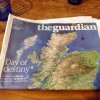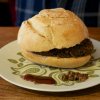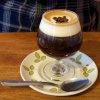Skyring
Established Member
- Joined
- Oct 18, 2005
- Posts
- 2,216
- Qantas
- LT Silver

Day of Destiny (18 September 2014 Edinburgh)
Today was a special day. Today was the voting day for the referendum on Scottish independence from the United Kingdom. We didn’t plan it that way, it just happened. Kind of like how we managed to be in Charleston for the 150th anniversary of the shelling of Fort Sumter. We were only there for a day, and that was it.
All over Edinburgh there were placards and chalked messages. People were dressed up in kilts or had Union flag vests or the St Andrews satire painted across their face. There was all sorts of silliness going on, but it was good-natured.
I wasn’t too sure how things would pan out in the evening. Maybe a few claymore-welding Highlanders cutting down anyone with a grin on their face. I was pretty sure that the No vote would win, but you never know…
John was a strong Yes vote, if we’d been asked. I took the position that it was a matter for the Scots, but my own preference was for stability and unity over uncertainty and division. Besides, the leader of the Scottish Nationalists hadn’t exactly impressed me with his wisdom. Or sanity, for that matter.
But hey, it was a great day to be in Edinburgh. Talk about your dumb luck in planning, eh?





























